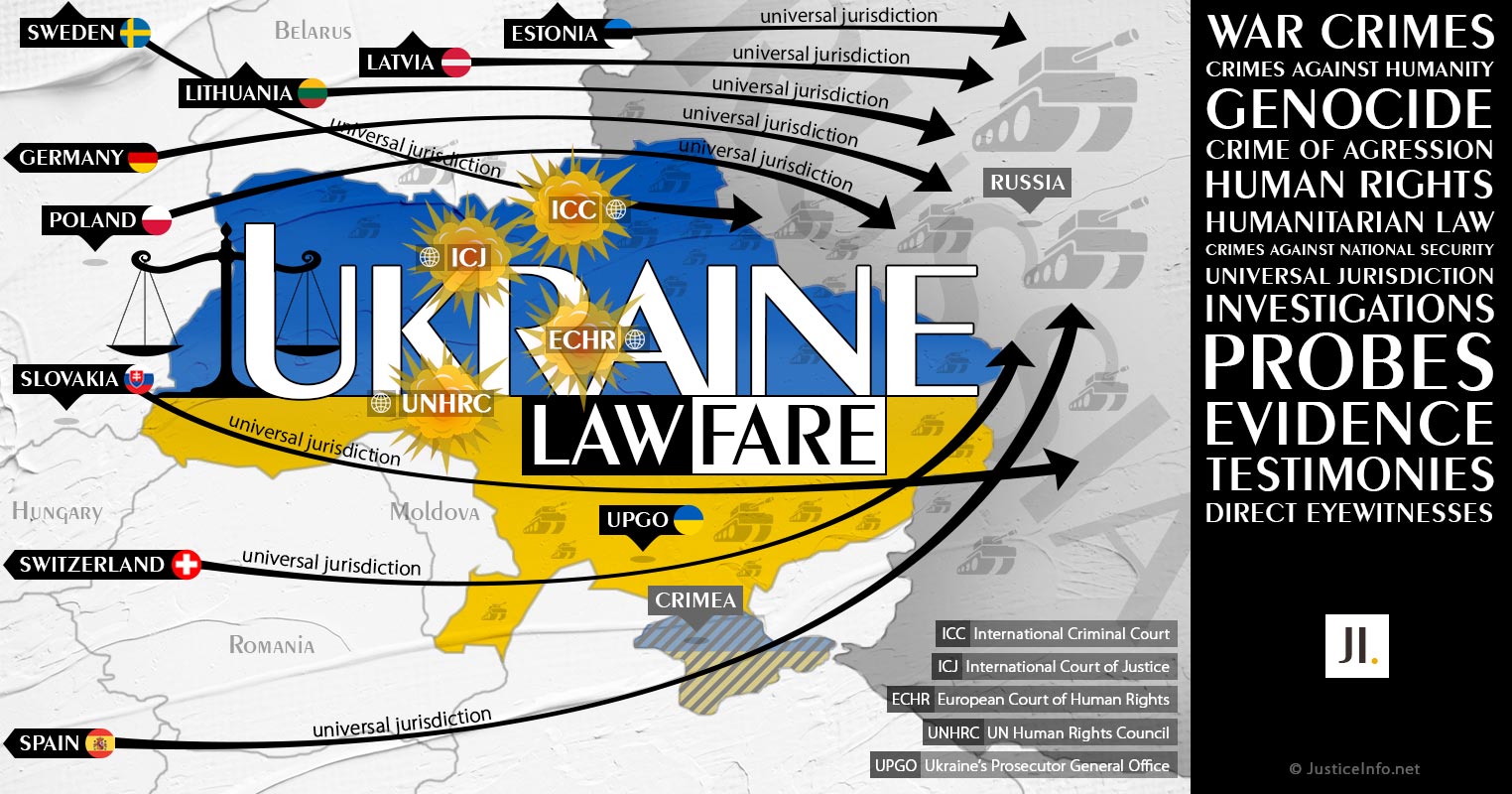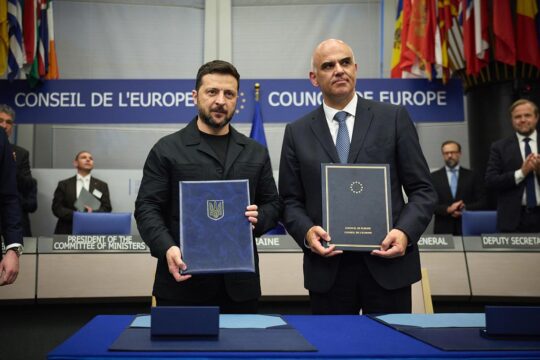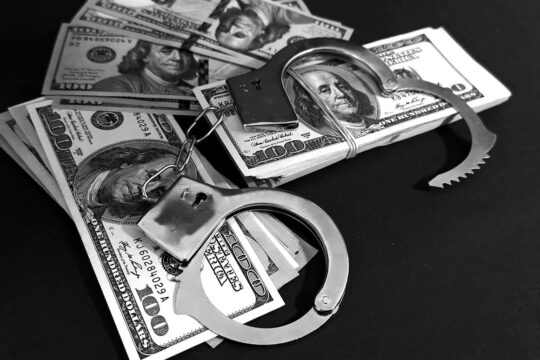Last update of the map made on 17/10/2022
Lawfare is “a strategic use of law by an actor in the international system, with the aim of advancing a cause or gaining an advantage over his adversaries”, according to French researcher Adrien Estève, quoted in the newspaper Le Monde in late 2019. The term has been part of academic vocabulary since 2001. It was coined by Charles J. Dunlap Jr., a retired US Air Force general and professor at Duke University Law School in North Carolina. "Lawfare" means using "law as a weapon of war" another American, former State Department nuclear non-proliferation negotiator turned Arizona State University law professor Orde F. Kittrie summed up in 2016.
Since its invasion by Russia on February 24, Ukraine has not only put up unexpected military resistance but also demonstrated quick and remarkable mastery of judicial tools against its aggressor. Two international courts were immediately (re)activated – the International Court of Justice (ICJ) and the International Criminal Court (ICC) — as well as a regional court, the European Court of Human Rights (ECHR). National justice systems (Germany, Poland, the three Baltic States, Spain, Sweden, Slovakia, Switzerland, and others in a growing list) have also launched preliminary investigations, while the UN Human Rights Council has launched a commission of inquiry to gather evidence “for future legal proceedings” – not forgetting of course Ukraine’s own judicial efforts spearheaded by its Prosecutor General.
Ukrainian "lawfare" is proving to be an asymmetric war. Indeed, the Russian Federation is in retreat on the judicial field, choosing not to attend hearings before the ICJ, although it presented its arguments in writing. It has also been excluded from the Council of Europe, the institution from which the ECHR emanates, and from the United Nations Human Rights Council. As for the ICC, which is conducting two investigations into the wars in Georgia and Ukraine, Russia believes the ICC Prosecutor "has decided to contribute to the anti-Russian hysteria raging in the United States, the European Union and the bodies they control”.
The use of all these legal tools is designed to get Ukraine recognized as a victimized, sovereign country and to expose its enemy as the perpetrator of serious international crimes — including aggression, which has not been so clearly invoked since World War II apart from Iraq’s invasion of Kuwait in 1990. Each of these tools has its specific and limited scope of competence. And it is the combination of all of them, no doubt, that determines this strategy by Ukraine and its supporters.
In the same way that this war has shaken Europe and the world, it has become a multi-faceted legal field bringing together the whole panoply of international crimes – war crimes, crimes against humanity, genocide and the crime of aggression. It has put into action the entire contemporary landscape of international justice, with a speed unprecedented in history. Justice Info’s interactive map is designed to help you visualize these initiatives and understand the essential specificities of each of them.
THE LEGAL BATTLE IN A SNAPSHOT






